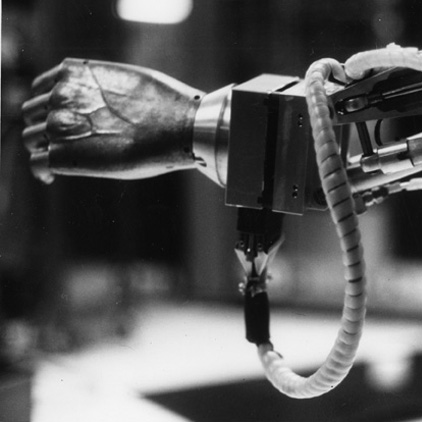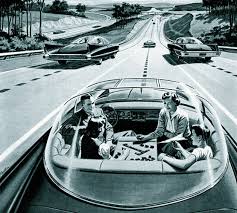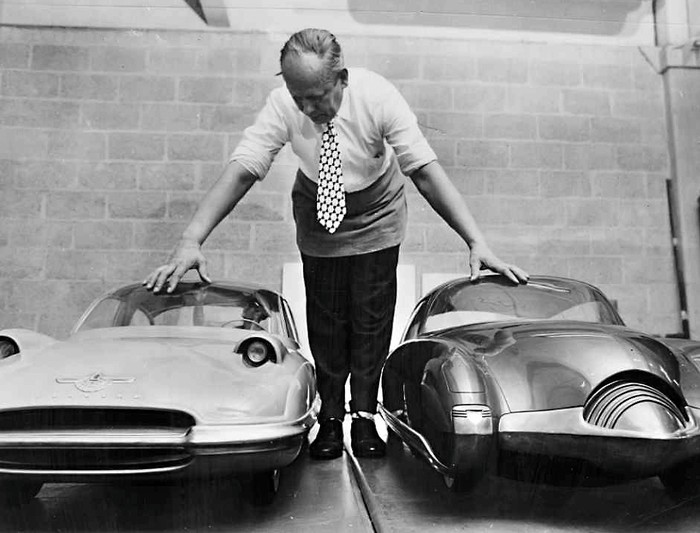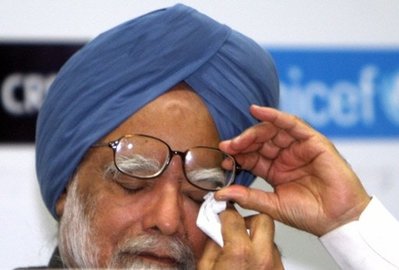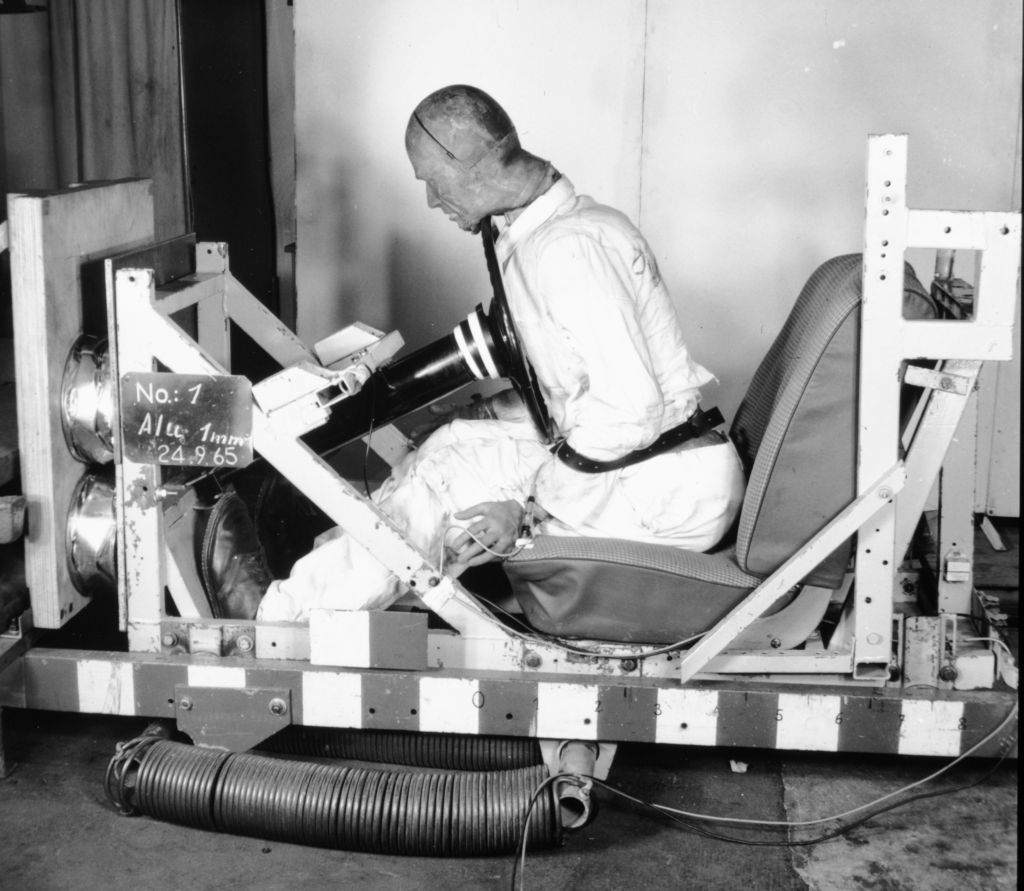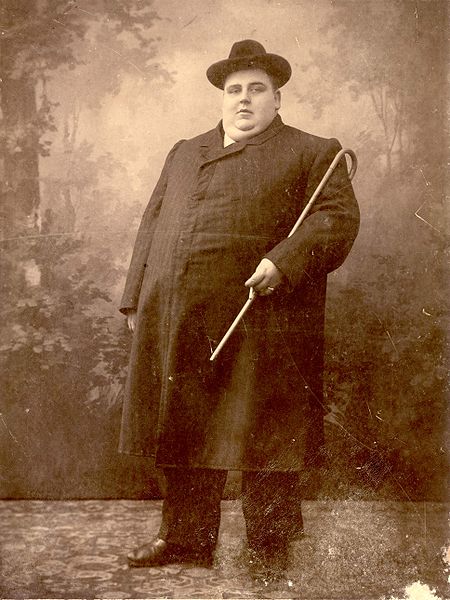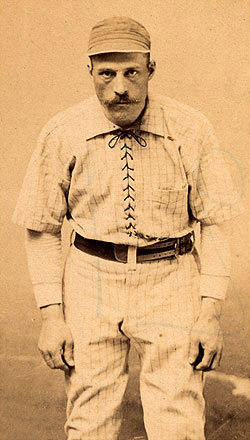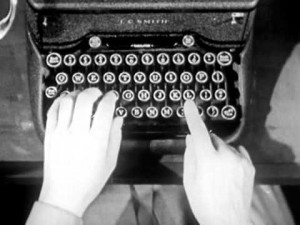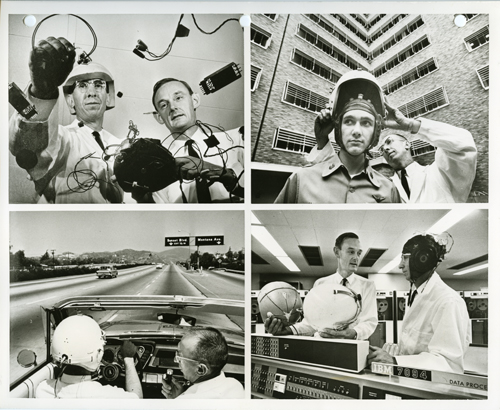There’s an error on the Brooklyn Daily Eagle site keeping me from accessing files, so I’ll be re-running some previous Old Print Articles until it’s fixed.
From the February 28, 1867 New York Times:
“Buffalo–Five dead bodies, two males, two females, and one newborn infant, were found by the Detective Police at the Grand Trunk Railroad depot this afternoon. They were shipped through the American Express Company for Ann Arbor, Mich. The bodies were packed in flour barrels in a nude state, and had not been dead over a week. The bodies are now being cleansed of flour, and will be exposed for identification to-morrow morning. This city is wild with excitement to know whose relations have been thus desecrated by body snatchers.”
You can have a very low crime rate in a police state, provided you don’t count the crimes committed by the police.
******
I still remember when Rudolph Giuliani was mayor of New York, and he sent helicopters to break up a gathering of African-American youth in Harlem at the precise second the city said it had to end, because one of the adult speakers was a well-known bigot. What if one of the copters had malfunctioned and crashed into the children? Imagine that horror.
******
War is big business in America, and we seem to use every reason–War on Drugs, War on Terror, etc.–to arm ourselves to the teeth, often getting bitten ourselves in the end. Those drones and weapons developed during the travesty of the Iraq War have begun making their way to your local police departments. But the problem stretches back further than that. From the Economist:
“ON AUGUST 9th Darren Wilson, a police officer in Ferguson, Missouri, shot and killed Michael Brown, an 18-year-old unarmed black man. Two days after the shooting, tactical officers—paramilitary police generally referred to as SWAT (for Special Weapons and Tactics)—were called in to help clear protestors from in front of Ferguson’s police department. They arrived dressed for war, in riot gear and gas masks, bearing long truncheons and automatic weapons—despite the fact that aside from some ugly looting incidents the day after the shooting, Ferguson’s protests have largely been peaceful. In the days that followed, tactical officers have tear-gassed a news crew, aimed automatic weapons and sniper rifles at unarmed protestors and patrolled the streets of a small town in Missouri in vehicles that would not look out of place in Baghdad or Aleppo. The days of the beat cop walking the street with nothing more than a trusty old revolver seem distant indeed. How did America’s police forces get so well-armed?
In this as with so much else in American governance, it starts with federal cash. Every year Congress passes the National Defence Authorisation Act, which sets out the Defence Department’s budget and expenditures. The version passed in 1990, in the wake of a sharp rise in drug-related violence, allowed the Defence Department to transfer military gear and weapons to local police departments if they were deemed ‘suitable for use in counter-drug activities.’ Between 2002 and 2011 the Department of Homeland Security, established after the attacks of September 11th 2001, disbursed more than $35 billion in grants to state and local police forces. In addition the ‘1033 programme’ allows the Defence Department to distribute surplus equipment to local police departments for use in counter-terrorism and counter-drug activities. The American Civil Liberties Union found that the value of military equipment used by American police departments has risen from $1m in 1990 to nearly $450m in 2013.”
Tags: Darren Wilson, Michael Brown
Marvin Minsky, visionary of robotic arms, thinking computers and major motion pictures, is interviewed by Ray Kurzweil. The topic, unsurprisingly: “Is the Singularity Near?”
Tags: Marvin Minsky, Ray Kurzweil
Paul Ingrassia of Reuters went on a test drive of the current iteration of the Google driverless car. The main technical point to still be worked out, obviously, is the challenge of making the robocars react to the unexpected (e.g., highway patrol waving them past an accident scene). That last 5% or so of such obstacles might be more difficult than the other 95%. The cars are programmed to travel up to 10 mph over the limit if cars around it are speeding (to avoid accidents). Google claims it currently has no business plan for the technology and is just focused on trying to perfect it. An excerpt:
“This test drive, in contrast, took place on the placid streets of Mountain View, the Silicon Valley town that houses Google’s headquarters.
The engineers on hand weren’t high-powered ‘car guys’ but soft-spoken Alpha Geeks of the sort that have emerged as the Valley’s dominant species. And there wasn’t any speeding even though, ironically, Google’s engineers have determined that speeding actually is safer than going the speed limit in some circumstances.
‘Thousands and thousands of people are killed in car accidents every year,’ said Dmitri Dolgov, the project’s boyish Russian-born lead software engineer, who now is a U.S. citizen, describing his sense of mission. ‘This could change that.’
Dolgov, who’s 36 years old, confesses that he drives a Subaru instead of a high-horsepower beast. Not once during an hour-long conversation did he utter the words ‘performance,’ ‘horsepower,’ or ‘zero-to-60,’ which are mantras at every other new-car test drive. Instead Dolgov repeatedly invoked ‘autonomy,’ the techie term for cars capable of driving themselves.
Google publicly disclosed its driverless car program in 2010, though it began the previous year. It’s part of the company’s ‘Google X’ division, overseen directly by co-founder
Sergey Brin and devoted to ‘moon shot’ projects by the Internet company, as Dolgov puts it, that might take years, if ever, to bear fruit.
So if there’s a business plan for the driverless car, Google isn’t disclosing it. Dolgov, who recently ‘drove’ one of his autonomous creations the 450 miles (725 km) or so from Silicon Valley to Tahoe and back for a short holiday, simply says his mission is to perfect the technology, after which the business model will fall into place.”
Tags: Dmitri Dolgov, Paul Ingrassia
I remember Web 1.0 home-delivery operations from 15 years ago like Urbanfetch, which looked like good ideas on paper, provided you weren’t wearing your reading glasses. In the age of smartphones and improved algorithms, such concerns are trying to get going again. Still seems dubious. From Claire Cain Miller at the New York Times Magazine:
“In the tech crash of the early 2000s, on-demand delivery services like Kozmo and Webvan weren’t just among the most colossal failures. They also became a sort of grim joke, symbolizing the excess that portended the bust. Afterward, conventional wisdom hardened: Web-enabled delivery was not a good business because it simply cost too much to build warehouses, manage an inventory and pay drivers. There was too little opportunity to recoup expenditures in delivery fees; people will pay only so much for toilet paper to be delivered before they decide to fetch it themselves.
But something is in the air of late, making hindsight blurry. Despite the early demise of Rewinery and the shrunken ambitions of others, such as eBay Now, similar start-ups with names like Caviar, SpoonRocket and DoorDash have raised half a billion dollars in investment in the last year, according to CB Insights, which tracks venture capital. Even Louis Borders, the founder of Webvan (as well as the Borders bookstore chain, another Internet casualty), is at work on a grocery delivery start-up. Uber is using the $1.4 billion it just raised to expand beyond delivering people to delivering things. Meanwhile, venture capitalists joke that every other entrepreneur they meet pitches an ‘Uber for X,’ bringing goods and services on demand: laundry (Washio), ice cream (Ice Cream Life), marijuana (Eaze) and so on. Investors are stuck wondering whether this is 2000 all over again, or whether this new breed of delivery start-ups can succeed where the last crop so famously failed.
John A. Deighton, a Harvard Business School professor who wrote a case study on Webvan, likes to compare the delivery business to shining shoes. ‘You make as much profit on one shoe as you do on a thousand shoes,’ he said. ‘There’s just no scale.’ In years past, it was difficult for Deighton to even teach his students about Webvan, because its fatal flaws were so obvious. They didn’t understand how the euphoria of the dot-com boom could have obscured its shortcomings. But in the last year, he has been asked to teach it three times. ‘Something has changed,’ he said.
The biggest change is that the companies are trying to improve same-day delivery with software — and, at the same time, are distancing themselves as far as possible from the physical supply chain that killed their ancestors.”
The Trolley Problem as applied to autonomous cars is currently one of the most popular legal and philosophical exercises. I think it may be somewhat overstated since the average human driver routinely tries to swerve from a crash, and that may be the default setting for robocars in what will hopefully be a world of far fewer potential crashes. But the issue of liability will still need to be worked out. From Patrick Lin’s Wired piece about the possibility of “adjustable ethics settings”:
“Do you remember that day when you lost your mind? You aimed your car at five random people down the road. By the time you realized what you were doing, it was too late to brake.
Thankfully, your autonomous car saved their lives by grabbing the wheel from you and swerving to the right. Too bad for the one unlucky person standing on that path, struck and killed by your car.
Did your robot car make the right decision? This scene, of course, is based on the infamous ‘trolley problem‘ that many folks are now talking about in AI ethics. It’s a plausible scene, since even cars today have crash-avoidance features: some can brake by themselves to avoid collisions, and others can change lanes too.
The thought-experiment is a moral dilemma, because there’s no clearly right way to go. It’s generally better to harm fewer people than more, to have one person die instead of five. But the car manufacturer creates liability for itself in following that rule, sensible as it may be. Swerving the car directly results in that one person’s death: this is an act of killing. Had it done nothing, the five people would have died, but you would have killed them, not the car manufacturer which in that case would merely have let them die.
Even if the car didn’t swerve, the car manufacturer could still be blamed for ignoring the plight of those five people, when it held the power to save them. In other words: damned if you do, and damned if you don’t.
So why not let the user select the car’s ‘ethics setting’?
Tags: Patrick Lin
Louis Hauesser was a wealthy German who saw his fortune sink during World War I, before reinventing himself as a “messiah” with a bevy of young followers, many of them attractive females. In that sense, he presaged Krishna Venta, Charles Manson and Mel Lyman, among others. He was in constant conflict with authority figures, and spent a fair amount of time as a defendant. A court appearance for a trifling matter in the early ’20s was the basis of an article in the December 23, 1921 New York Times. The story:
“Berlin–The Moabit Police Court witnessed a strange scene when an ‘Apostle of Charity,’ one Louis Hauesser, self-styled ‘Prophet of the Latter-Day Christ, World Benefactor, Initiator of the New Era and Proclaimer of the New Healing,’ was called to the bar on a charge of having failed to pay $6.29 to a Berlin paper for an advertisement, the insertion of which is said to have been obtained under false pretenses. Prophet Hauesser, six feet of splendid manhood, had bare legs, sandals, a hair shirt, prophet whiskers and the longest inflowing locks seen in court in many a moon. He was accompanied by a similarly garbed and locked flock of faithful, more than a score of freakish men and women.
For months the German Messiahs have been peripatetically and profitably prophesying all over Germany, making many converts, particularly among women. The South German police, taking cognizance of the prophet’s increasing bare-footed and hair-shirted female following, put him into the psychiatric ward of Tuebingen University for observation, whence he was released owing to lack of a charge, but the professor’s expert findings are of remarkable human interest.
Until the outbreak of the war the hairy prophet was a well-groomed, fashionably dressed spender and husband of a remarkably beautiful woman living in luxury. He owned a champagne factory and also derived a large income from betting bureaus in Switzerland. But he blew in all his own and his wife’s money and went broke early in the war.
Then he began his career as an itinerant long-haired prophet. ‘His conspicuous virility exercised influenced a strong influence over a large number, even intellectual persons, particularly women,’ according to the Tuebingen professor.
In the police court Hauesser stubbornly refused to sit on the accused bench but graciously gave the Judge permission to go ahead and sentence him, however he pleased. He got the usual installment of three days in jail for contempt of court.”
You may not want to be in the system, but there you are. We all are. From Charles Arthur at the Guardian:
“Google is buying Jetpac, a ‘city guides’ company with a twist which used image recognition and neural network technology to recommend places it deemed the happiest, most popular or with the best views and scenic hikes.
Jetpac offered special ‘City Guides’ for more than 6,000 destinations, using neural network technology developed by Pete Warden, the company’s co-founder and chief technology officer.
‘We can spot lipstick, blue sky views, hipster moustaches and more, through advanced image processing on billions of photos,’ Jetpac’s home page explains. The app worked by analysing public photos with location data shared on Flickr, Instagram and other photo networks for particular elements, and then extracting key elements about them. …
The purchase, for an undisclosed sum, points to Google’s growing interest in artificial intelligence applications as it seeks to grow offerings such as its Google Now personal assistant.”
Tags: Charles Arthur, Pete Warden
Speaking of deranged leaders who prey on the needs of others, emotional and otherwise, Foxcatcher, Bennett Miller’s film about John du Pont, a madmen who wrestled the amateur sports world into his madness, is to be released in a couple of months. Most reviews so far have been positive. Here’s a reprint of an earlier post I put up about du Pont.
John du Pont was the wealthy benefactor of amateur wrestling, a schizophrenic whose money kept treatment at a distance, who descended into utter madness in the 1990s, and ultimately murdered Olympic hero David Schultz. The heavily armed du Pont, who’d played host to underdog sports since the 1960s, was arrested only after a two-day stand-off with the police. The opening of “A Man Possessed,” Bill Hewitt’s 1996 People article about the tragedy:
“Lately he had started telling people that he was the Dalai Lama. If anyone refused to address him as such, he simply refused to talk to them. That was bizarre, but then John E. du Pont, 57, a multimillionaire scion of the fabled industrial family, had always been odd. For fun he drove an armored personnel carrier around his 800-acre estate, Foxcatcher. He complained about bugs under his skin and about ghosts in the walls of the house. By and large, friends and family shook their heads, fretted about his ravings—and waited for the inevitable breakdown. ‘John is mentally ill and has been mentally ill for some time,’ says sister-in-law Martha du Pont, who is married to John’s older brother Henry. ‘But this year he really went over the edge.’
No one realized how far over until Friday afternoon, Jan. 26. Around 3 p.m., Dave Schultz, 36, a gold medalist in freestyle wrestling at the 1984 Olympics, was out working on his car at Foxcatcher, in leafy Newtown Square, Pa., 15 miles west of Philadelphia, where du Pont had established a residential training facility for top-level athletes. Suddenly du Pont pulled into the driveway of the house where Schultz lived with his wife, Nancy, 36, and their two children, Alexander, 9, and Danielle, 6. From the living room, Nancy heard a shot. When she reached the front door she heard a second. Looking out in horror, she saw a screaming du Pont, sitting in his car, extend his arm from the driver’s side window, take aim at her husband, facedown on the ground, and pump one more bullet into his body. After pointing the gun at Nancy, du Pont drove down the road to his home, leaving her to cradle her dying husband.
During the two-day standoff that ensued, some 75 police and SWAT team members surrounded the sprawling Greek-revival mansion that du Pont called home. Finally, on Sunday afternoon, du Pont emerged, unarmed, to check on the house’s heating unit, which the police had turned off, and was taken without a shot being fired. That evening, a gaunt, ashen-faced du Pont was arraigned in a Newtown Township courtroom on a charge of first-degree murder, which in Pennsylvania can carry the death penalty. As investigators tried to piece together a motive for the seemingly senseless killing, there emerged the sad, scary portrait of a man believed to be worth more than $50 million who was rich enough to indulge his madness and to put enough distance between himself and the world at large to ensure that no one really bothered him about it.”
As you might have noticed if you read this blog regularly, I’m fascinated by cults, communes, utopias and mass movements, when groups of people give themselves up to an idea that doesn’t necessarily mesh with reality. On that subject: Read “The Man Who Saves You From Yourself,” Nathaniel Rich’s excellent 2013 Harper’s profile of cult infiltrator David Sullivan. (Sullivan died from cancer just after its publication.) Here’s the opening:
Nobody ever joins a cult. One joins a nonprofit group that promotes green technology, animal rights, or transcendental meditation. One joins a yoga class or an entrepreneurial workshop. One begins practicing an Eastern religion that preaches peace and forbearance. The first rule of recruitment, writes Margaret Singer, the doyenne of cult scholarship, is that a recruit must never suspect he or she is being recruited. The second rule is that the cult must monopolize the recruit’s time. Therefore, in order to have any chance of rescuing a new acolyte, it is critical to act quickly. The problem is that family and friends, much like the new cult member, are often slow to admit the severity of the situation. ‘Clients usually don’t come to me until their daughter is already to-the-tits brainwashed,” says David Sullivan, a private investigator in San Francisco who specializes in cults. “By that point the success rate is very low.”
Sullivan became fascinated with cults in the late Sixties, while attending Fairview High School in Boulder, Colorado. It was a golden age for religious fringe groups, and Boulder was one of the nation’s most fertile recruiting centers, as it is today. (There are now, according to conservative estimates, 2 million adults involved in cults in America.) “You couldn’t walk five steps without being approached by someone asking whether you’d like to go to a Buddhist meeting,” says John Stark, a high school friend of Sullivan’s. Representatives from Jews for Jesus and the Moonies set up information booths in the student union at the University of Colorado, a few miles down the road from Fairview High. Sullivan engaged the hawkers, accepted the pamphlets, attended every meditation circle, prayer circle, shamanic circle. When the Maharishi Mahesh Yogi led a mass meditation session at the university, Sullivan was there, watching from the back of the lecture hall.
Sullivan was not religious. Though raised Catholic, by high school he considered himself a “hardcore atheist.” Before the family moved to Boulder, his father had managed a used-car dealership in Salina, Kansas. His mother worked in a pawnshop. On Thursday nights, during the late shift, Sullivan sat with her at the counter, where he met criminals, alcoholics, and grifters trying to stay one step ahead of bill collectors. He saw how people could be manipulated if you exploited their weaknesses. He learned about desperation and the lies people told to arouse sympathy. From his grandfather, a funeral-home director who, Sullivan suspects, forged death certificates for the local Catholic church, he learned how to keep a secret. The suicide of a gay priest was called a heart attack. The botched abortion of a pregnant nun was pneumonia.
During spring break in 1968, inspired by On the Road, Sullivan and Stark set off on a tour of the Southwest in Sullivan’s baby-blue Pontiac convertible. They visited Drop City in southern Colorado, eating brown rice and tofu under geodesic domes, and the New Buffalo Commune outside of Taos, New Mexico, washing dishes after the communal meal and hitting on the women. Stark remembers how excited Sullivan would become when he entered these communities. “He had a wanderlust, a powerful urge to immerse himself in these different cultures.” When they spent the following summer in Mexico City, Stark noticed that Sullivan had begun to speak with a Mexican accent.
“There was a soul-searching element of it,” says Sullivan. “But I was also curious to know what the gurus were getting out of it. And I wanted to figure out how they picked up all those girls.”
The spiritual groups, he soon realized, shared a simple tactic: they demanded that their followers suspend critical thought. “They’d say, ‘You have to break out of your Western mentality. You’re too judgmental. You have to abandon your whole psychological-intellectual framework. Your obsessive materialism is blocking you from seeing the truth.”
“I became disturbed by how dramatically they transformed people, and in such a short period of time. They could take some regular American kid and all of a sudden he’s wearing saffron robes, walking around barefoot, all painted up, with a tiny ponytail and shaved head, dancing for hours, selling flowers and incense, living on the floor and eating disgusting food, repeating Hare Krishna, Hare Krishna, Krishna Krishna, Hare Hare, Hare Rama.”•
Tags: David Sullivan, Nathaniel Rich
Driverless cars, when they’re perfected enough to markedly reduce road fatalities, may force the issue with 3D-printed organs, since far fewer crashes would interrupt the steady delivery of hearts and livers. From Erin Griffith at Fortune:
“It’s a dark thought, and the sort of thing only a futurist would think of. Which is why I’m not surprised that Bre Pettis, founder and CEO of the 3D printing company Makerbot, brought it up. When I asked him about 3D-printed organs earlier this summer at the Northside Festival, a conference in Brooklyn, he told me that 3D-printed body parts won’t become a reality until autonomous vehicles arrive to market. It makes for a surprising connection between two futuristic technologies.
‘The self-driving car is coming, and right now, our best supply of organs comes from car accidents,’ he said. ‘So, if you need an organ you just wait for somebody to have an accident, and then you get their organ and you’re better.’ I suggested that was a dark way of looking at it.
His response: ‘We have this huge problem that we sort of don’t talk about, that people die all the time from car accidents. It’s kind of insane. But the most interesting thing is, if we can reduce accidents and deaths, then we actually have a whole other problem on our hands of, ‘Where do we get organs?’ I don’t think we’ll actually be printing organs until we solve the self-driving car issue. The next problem will be organ replacement.'”
Tags: Bre Pettis, Erin Griffith
From the March 17, 1904 New York Times:
“While in a cage with three lions this afternoon, Alfred J.F. Perrins, the animal trainer, suddenly became insane. Soon after he entered the cage Perrins struck one of the lions a vicious blow and cried, ‘Why don’t you bow to me, I am God’s agent.’
Perrins then left the cage, leaving the door open and saying, ‘They will come out, as God is looking after them.’ He then stood on a box and called on the spectators to come and be healed, saying he could restore sight to the blind and hearing to the deaf, and heal any disease by a gift just received from God.
The lions started to leave the cage and the spectators fled. The cage door was slammed by a policeman, who arrested Perrins. Physicians announced Perrins hopelessly crazed on religion. He has been in show business thirty years , having been with Robinson, Barnum, and Sells.”
As labor is disrupted by technology, we’re all freelancers, we all have freedom–we’re all practically free. The sharing economy is great except if you’re providing the service, unless you’re the rabbit who’s been tasked, and that’s the side of the fence more of us will find ourselves on. You know those bargains you love? You’re the bargain now, or you may soon be. Nice doing business with you. From Natasha Singer at the New York Times:
“In the promising parlance of the sharing economy, whose sites and apps connect people seeking services with sellers of those services, Ms. [Jennifer] Guidry is a microentrepreneur. That is, an independent contractor who earns money by providing her skills, time or property to consumers in search of a lift, a room to sleep in, a dry-cleaning pickup, a chef, an organizer of closets.
For people seeking a sideline, these services can provide extra income. Beyond the ride services, there are businesses like Airbnb, the short-term-stay broker; task brokers like TaskRabbit and Fiverr; on-demand delivery services like Postmates and Favor; and grocery-shopping services like Instacart.
‘Someone on Sidecar doing the same commute they do on a daily basis and picking up a rider, it’s really free money for the driver and reduced cost for the rider,’ notes Nick Grossman, the general manager for policy and outreach at Union Square Ventures, which is an investor in Sidecar.
In a climate of continuing high unemployment, however, people like Ms. Guidry are less microentrepreneurs than microearners. They often work seven-day weeks, trying to assemble a living wage from a series of one-off gigs. They have little recourse when the services for which they are on call change their business models or pay rates. To reduce the risks, many workers toggle among multiple services.
‘Having a diverse portfolio is the best protection,’ says Sara Horowitz, the founder and executive director of Freelancers Union, an advocacy organization. ‘People are doing this in the midst of wage stagnation and income inequality, and they have to do these things to survive.'”
On a 1977 Mike Douglas Show episode, comic-book collector Phil Seuling showed off an original Superman, revealing that it was worth $1,500. The audience gasped. But that was before a globalized world needed simple dialogue and action-hero antics to sell blockbusters all over the world. Today an exceptionally clean copy of that inaugural issue, currently at auction on eBay, has seen early bids reach $1.75 million, heading toward the stratosphere faster than a speeding bullet. From Graeme McMillan at the Hollywood Reporter:
“In a video released to promote the auction, Pristine Comics owner Darren Adams explained how the auction copy remained in such good edition. ‘There was a gentleman in 1938, buys a copy … off the newsstand. And he lived in a fairly high altitude area of West Virginia and kept the book in a cedar chest,’ Adams said. The quality of the issue — the pages of which, thanks to being kept in a dark, dry space for decades, haven’t yellowed with time — makes the copy ‘not just a copy of Action Comics No. 1 [but] the copy of Action Comics No. 1,’ according to the dealer.
Back in 2011, another edition of the issue raised $2.1 million in auction, becoming the most expensive comic ever sold in the process. With nine days remaining on the current Action Comics auction and bidding currently at $1.6 million, it’s very possible that record is about to be broken.”
_______________________________
“The superheroes caught everybody’s fancy”:
Tags: Darren Adams, Graeme McMillan
I know people who subscribe to high-fat, paleo diets and, boy, they don’t look healthy to me. It doesn’t mean my eyes are right, but I’m sticking to vegetarianism. There’s little doubt, however, that Americans had misplaced priorities when they largely focused on cutting fat while high-fructose corn syrup was simultaneously becoming a staple of our diets. That crap will kill you. From “The Way We Eat Now,” by Erica Wagner in the Financial Times:
“[Nina] Teicholz describes a ‘perfect storm’ of forces in postwar America that altered the nutritional landscape. Charismatic leaders in nutrition science – such as Ancel Benjamin Keys, a biologist and pathologist at the University of Minnesota who began looking at the causes of heart disease in the 1950s – developed a hypothesis that fat was the great evil in the American diet: ‘money poured in to test it, and the nutrition community embraced the idea. Soon there was very little room for debate.’
Again and again, Teicholz points to studies that have served as the basis for the argument in favour of the demonisation of fat – such as the Framingham Heart Study, begun in 1948, or the Ni-Hon-San Study of Japanese men, begun in 1965 – and demonstrates why they don’t necessarily prove what they were stated to prove. As The Lancet put it in 1974: ‘So far, despite all the effort and money that has been spent, the evidence that eliminating risk factors will eliminate heart disease adds up to little more than zero.’ (It’s hard not to feel a little proud of this British scepticism of the low-fat fad: three cheers for the land of double cream.)
These are startling conclusions, though as Teicholz shows, the evidence has really been there all along. We should drink whole milk, she says, eat butter and stock up on cheeses, sausages, offal and even bacon. ‘None of these foods have been demonstrated to cause obesity, diabetes, or heart disease . . . Sugar, white flour, and other refined carbohydrates are almost certainly the main drivers of these diseases.’ But government health advice is still stuck in the low-fat rut: and, however well-meaning, it is there to be exploited by the companies that stand to gain from that advice. Boseley, writing about the diet industry, is unafraid to call a spade a spade: ‘With its gimmicks, motivational books and celebrity endorsements, [it] is one of the biggest frauds of our time.'”
Knowing the present isn’t knowing the future. At best, we make educated guesses uncolored by personal beliefs or wants. Even then, we’re often wrong, unprepared for the black swans and their lovely necks. When William Masters and Virginia Johnson sat down for this Good Morning America interview, with the AIDS crisis at its height, it seemed monogamy, not Tinder, would be the future. How quickly things change.
I don’t know if Rob Manfred is the best person to be the new baseball commissioner in the post-Selig Era–maybe too much of an inside man?–but I’m heartened that he and the other candidates focused on speeding up the game, spreading the content better through new platforms and doing a superior job selling the players. (Mike Trout and Andrew McCutchen should be household names even to non-baseball fans.)
On the first item on the list: You can only hasten the game so much because the number of commercials is mind-numbing, but there should be a 15-second pitch clock and a failure to beat the timer resulting in a ball call. Some think this would lead to more pitcher injuries because they’d be rushing, but I doubt it would exacerbate that problem. From Jon Paul Morosi at Fox Sports:
“Ultimately, the owners’ occasionally contentious discussions served a noble purpose: They forced the candidates — and themselves — to confront concerns about baseball among contemporary sports consumers.
The game often moves too slowly, and baseball has lost young fans to other sports — particularly soccer, which fits neatly into two-hour blocks on kid-friendly Saturday and Sunday mornings in the Eastern time zone.
The notion of a ‘pitch clock’ was mentioned during the owners’ conversations this week; old-school types are certain to cringe, but that’s precisely the sort of thing that Manfred will need to consider to ensure baseball’s viability to future generations.
‘Folks see Rob as a person who can take where we are and jump-start it into new dimensions with new ideas, fresh ideas,’ Baer said. ‘We have to figure out ways to make (baseball) relevant to that 12-year-old … We want to make baseball as relevant as possible to them — with their handheld, on television, getting more people playing the sport.'”
Tags: Jon Paul Morosi, Rob Manfred
- You May Be Buying Republican Cereal
- Here’s What Happened When I Agreed To Try Group Masturbation
- This Map Looks Like A Penis
- ‘Pregnant Man’ Has Right To Divorce Wife
- That Massive Bulge On Idris Elba Is Not What You Think
- Why These Women Say ‘Masturbation Is A No-No’
- Pundits: Archie Comics Are Promoting The Occult And Homosexuality
- This Woodchuck Had A Bad Day, But It Got Better
- Tara Reid Made A Perfume Based Off Sharknado. Yep.
- Soon We’ll All Be Having Sex With Robots, Maybe: Scientist
10 search-engine keyphrases bringing traffic to Afflictor:
- how much did old timey hangmen earn?
- do people sell their pubic hair?
- were abbott and costello supposed to be criminals?
- did walt whitman ever meet abraham lincoln?
- is donald trump a happy man?
- info about rattlesnake jones of wyoming
- link between professor irwin corey and thomas pynchon
- why do people in loma linda live so long?
- for fear of becoming dinosaurs we are turned into sheep
- herb kelleher is legendary in the airline industry
- Old Print Articles: Sifting through dumping grounds for treasure (1886) + Dinners in pill form popular in Indianapolis (1899).
- Featured Videos: Mike Tyson discusses boxing with David Brenner and Jake LaMotta (1986) + Robin Williams interviewed during the first blush of his success (1978) + Chester Gould, Dick Tracy creator, appears on To Tell the Truth (1965) + British roboticist Tony Sale takes “George” for a walk (1949).
- Recently Posted on NYC’s Craigslist: Ninja hasn’t heard of Tinder + Looking for an investor–and a cellmate + We’re searching for someone who’s a pervert and a gentleman.
- Warren Bennis, corporate leadership expert, loathed “job creators.”
- Uber for doctors was just a matter of time, and it’s arrived.
- Texas is betting big on Bitcoin.
- The Iraq War is rearing its ugly head again, now in Ferguson, Missouri.
- David Simon recalls the bright and dark sides of Robin Williams.
- The Pew Research Center looks at automation’s effect on labor.
- Harold Robbins did extensive research for the sex scenes he wrote.
- Expression of emotions seem to be inborn and universal.
- Someday, if we’re not all dead, we’ll be able to consume all we want.
- Nobody knows when we’ll be able to supercharge human brains.
- Some think we can control information in the Digital Age. Won’t happen.
- It’s not likely we’ll predict the next pandemic.
- There likely is a second leaker on the Snowden level.
- “Smarter sentencing” is great, provided you’re not poor or a minority.
- Newspapers aim to remake themselves as Buzzfeed or some other bullshit.
- Fast-food restaurants will likely become highly automated.
- In 1993, the first online purchase was a Sting CD.
- San Francisco has golf courses but not population density.
- Driverless-car developers are trying to head off hackers.
- Lauren Bacall, that wonderful, had a rich and fascinating life.
- Jane Arraf, Al Jazeera’s Iraq correspondent, did an AMA.
- You can have lots of sex in Iran, but please don’t talk about it.
- The Panama Canal Zone was a world all its own for Americans.
- The Internet of Things may be the most overhyped technology.
- A child can outreason a search engine, but that might not matter.
- Coco Chanel, a terrible, awful person, made really nice clothes.
- A brief note from 1898 about monkey stew.
- A brief note from 1885 about a headless chicken.
- A brief note from 1890 about lactose intolerance.
- This week’s Afflictor keyphrase searches.
I’d be remiss if I closed the week without posting something about the recently departed Lauren Bacall. After that beautiful published her memoirs at the end of 1978, she sat for an interview with Christopher P. Andersen of People. An excerpt:
“Question:
You were brought up to be a ‘nice Jewish girl,’ as you put it, but in Hollywood you hid that fact. Why?
Lauren Bacall:
So much more was made of my concealing it because I didn’t ‘look’ Jewish. There was anti-Semitism in Hollywood and I was terribly frightened. Remember, I was 19 and wasn’t exactly swimming in self-confidence. It’s one area of my life I am not proud of.
Question:
When you were going with Bogart, did you tell him you were Jewish?
Lauren Bacall:
Yes. I had once been asked out by a West Point cadet and the subject of religion came up. He never called back, and I was sure it was because I was a Jew. So when I fell in love with Bogie, I knew I had to damn well get it straight. Of course, he was the last man on earth it would have bothered.
Question:
Were you a great fan of Bogie’s before you met him?
Lauren Bacall:
Howard Hawks said he’d like to put me in a film with Cary Grant or Humphrey Bogart. I thought, ‘Cary Grant—terrific! Humphrey Bogart—yucch.’
Question:
Didn’t Howard Hawks help create your famous voice?
Lauren Bacall:
You can’t acquire a voice. Either you have it or you don’t. But Howard wanted me to be insolent with men on the screen, and that meant training my voice so it would remain low. I would park on Mulholland Drive—so as not to disturb the neighbors—and read The Robe aloud in a low, low voice. I was never much of a screecher anyway.
Question:
How did the Bacall ‘look’ come about?
Lauren Bacall:
I used to tremble from nerves so badly that the only way I could hold my head steady was to lower my chin practically to my chest and look up at Bogie. That was the beginning of the Look. I still get the shakes from time to time.
Question:
Are you the tough cookie most people think you are?
Lauren Bacall:
I never thought I was a tough cookie at all. When I was making To Have and Have Not Howard Hawks wanted an attitude of worldliness. At the time I was trying to figure out how a kid with absolutely no sexual experience could convey worldliness. The biggest misconception people have about me is that I’m in control of every situation. I’m rarely in control of any situation.
…
Question:
After Bogie’s death your brief engagement to Frank Sinatra ended abruptly. How do you view Sinatra today?
Lauren Bacall:
Frank did me a great favor. He saved me from the complete disaster our marriage would have been. But the truth is that he behaved like a complete shit. Still, that was over 20 years ago. When I run into him now, we give each other a nice hello.”
Tags: Christopher P. Andersen, Frank Sinatra, Howard Hawks, Humphrey Bogart, Lauren Bacall
As I’ve mentioned before, I doubt we’ll survive as a species without AI and brain-enhancement, though those things could potentially end us as well. It’s a gambit. The opening of Kevin Loria’s Business Insider article about the future of souped-up brains, which I would guess are probably still a long way off:
“With a jolt of electricity, you might be able to enter a flow state that allows you to learn a new skill twice as fast, solve problems that have mystified you for hours, or even win a sharpshooting competition.
And this just scratches the surface in terms of what we might be able to do to improve cognition as our understanding of the brain improves. With an implanted chip, the possibilities might be close to limitless.
Researchers think that as we learn more about the brain, we’ll be able to use electricity to boost focus, memory, learning, mathematical ability, and pattern recognition. Electric stimulation may also clear away depression and stave off cognitive decline. We’ll eventually even implant computer chips that allow us to directly search the web for information or even download new skills — like Neo learning Kung-fu in The Matrix.
We’re heading down a path that will allow us to supercharge the brain.
The key is decoding how the brain works. That’s the hurdle in the way, and the one that billions of dollars in research are going towards right now.
‘I don’t think there’s any doubt we’ll eventually understand the brain,’ says Gary Marcus, a professor of psychology at New York University, and an editor of the upcoming book The Future of the Brain: Essays by the World’s Leading Neuroscientists.
‘The big question is how long it’s going to take,’ he says.”
Tags: Gary Marcus, Kevin Loria




